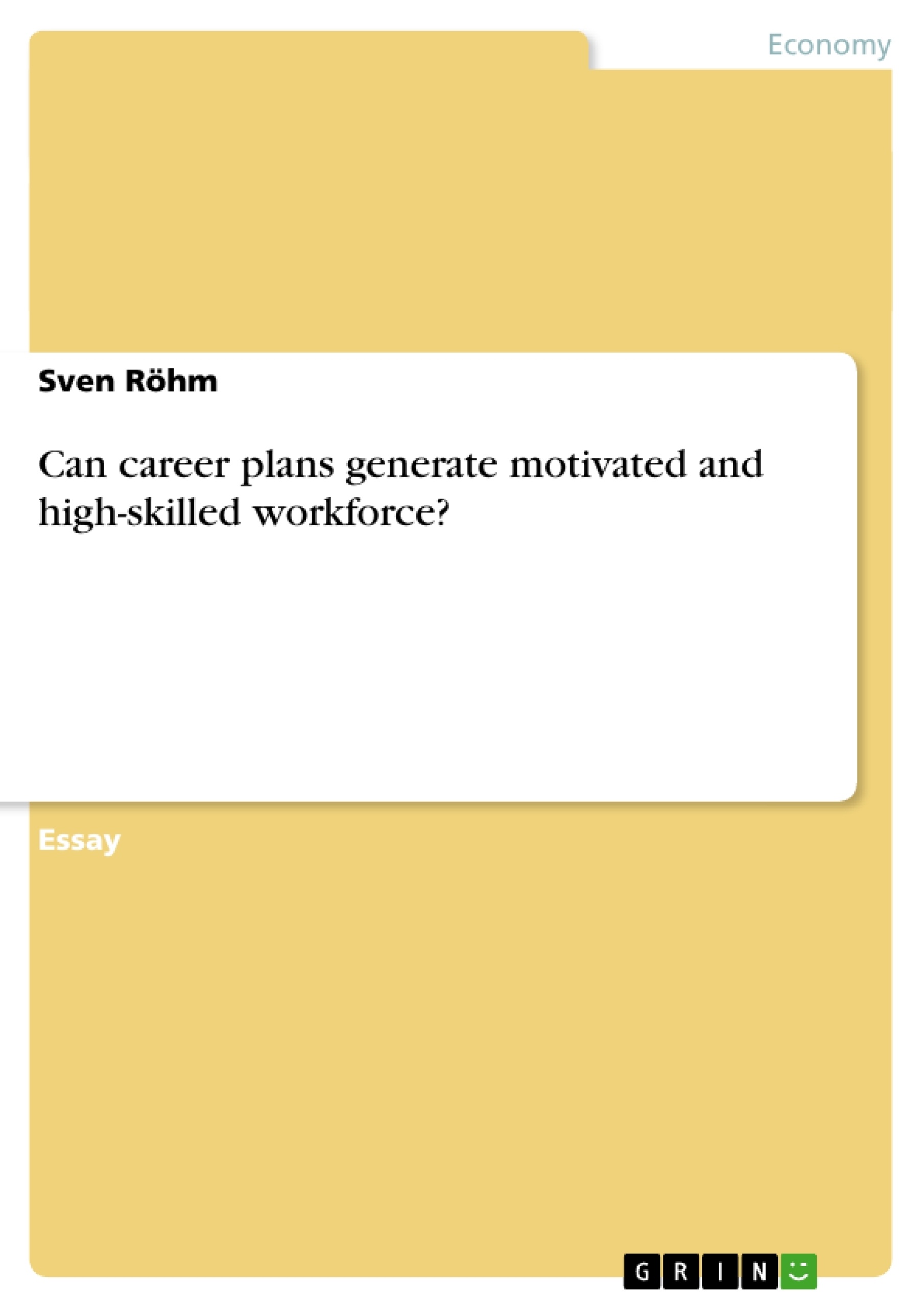Career plans, in the literature also referred to as ‘training and development plans’ or ‘personal development plans’ (PDP), are the reaction to a changing business world and social environment in theory. Bagshaw (1996: p.16) suggests that “…the dynamic people of today’s dynamic world are attracted to jobs where they can see clear development for themselves, with opportunities spreading in all directions.” Accordingly, employees increasingly demand the possibility to develop themselves and their careers within the organisation. Employees who are able and willing to participate in development programmes should be more motivated and higher skilled than their ‘non-developing’ colleagues. These development programmes should provide a certain career satisfaction, which Gattiker and Larwood (1988) define as “a stimulated response to career and work events” and significantly correlate with the employee’s motivation. To create motivated and high-skilled workforce, some organisations introduced different approaches for a systematic career management. For example, external and internal trainings have been offered on a voluntary basis, annual performance appraisals have been implemented and chances for further education like Executive MBA courses have been pledged to promising staff.
Thus, organisations seem to have understood that personal development of the employees is to a certain extent important to “widen the pool of talents” (Taylor and Edge, 1997: p. 21). Development means gathering knowledge, which is suggested to be the “only meaningful resource today” (Reynolds and Ablett, 1998: p. 26) that makes an organisation more productive and more competitive (Evans, 1998). In consequence, career plans are the most promising method of personal development within organisations, because they are supposed to combine the individual and organisational needs and visions. In theory, both parties are having equal rights in determining the success, the status quo and the required procedure for the future development.
Inhaltsverzeichnis (Table of Contents)
- Introduction
- Who is responsible for career plans?
- The purpose of career plans
- How to build a career plan
- The dark side of career plans
- Conclusion
Zielsetzung und Themenschwerpunkte (Objectives and Key Themes)
This essay explores the effectiveness of career plans in fostering a motivated and highly skilled workforce. It aims to analyze the purpose of career plans, the responsibilities involved, and the challenges faced in implementing them.
- The role of career plans in individual and organizational development.
- The challenges of aligning individual career aspirations with organizational needs.
- The impact of external factors, such as changing business environments, on career planning.
- The importance of a balanced approach to career planning, involving both individual and organizational initiatives.
Zusammenfassung der Kapitel (Chapter Summaries)
- Introduction: The introduction defines career plans and their relevance in today's dynamic business world. It emphasizes the need for employees to develop themselves and the potential of career plans in fostering motivation and skills development.
- Who is responsible for career plans?: This section examines the responsibilities and expectations surrounding career plans. It explores the arguments for both organizational and individual ownership of career development, highlighting the challenges of aligning these perspectives.
- The purpose of career plans: This chapter delves deeper into the intended outcomes of career plans. It discusses the rationale behind their implementation and the benefits for both employees and the organization.
Schlüsselwörter (Keywords)
Key terms and concepts explored in this work include career plans, personal development plans, training and development, employee motivation, skill development, organizational development, and the balance between individual and organizational responsibilities in career planning.
- Quote paper
- Sven Röhm (Author), 2003, Can career plans generate motivated and high-skilled workforce?, Munich, GRIN Verlag, https://www.grin.com/document/24458



